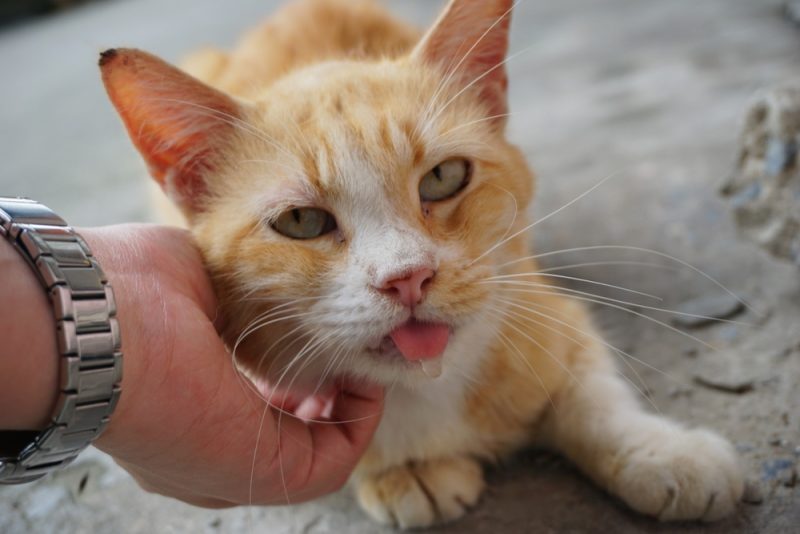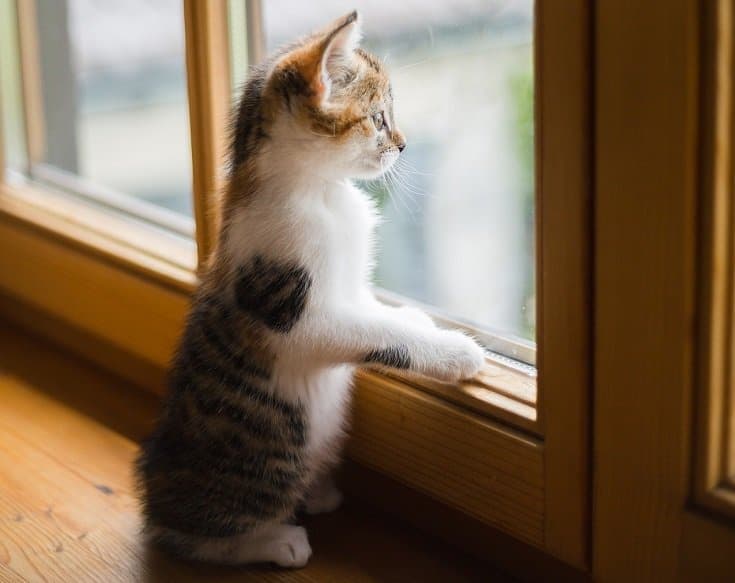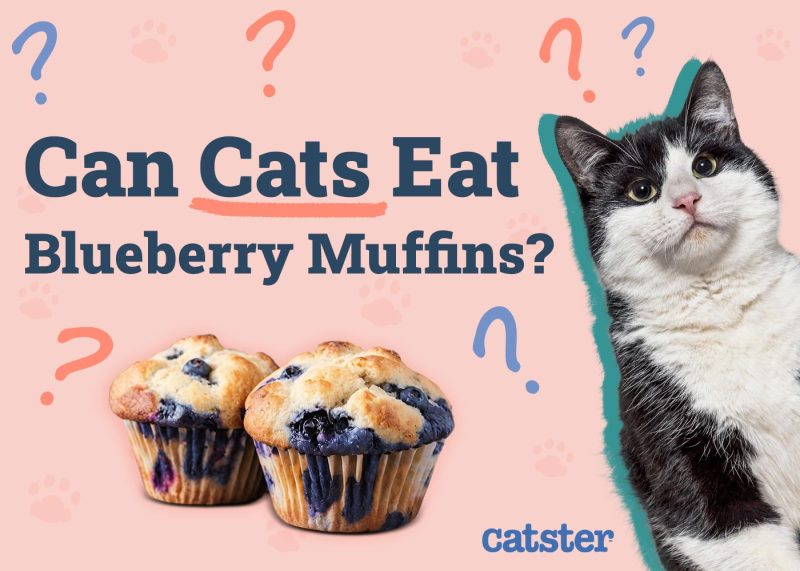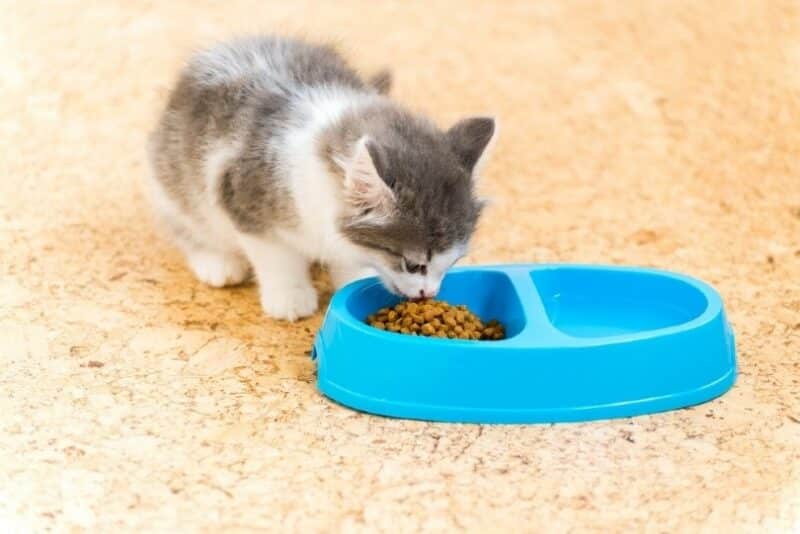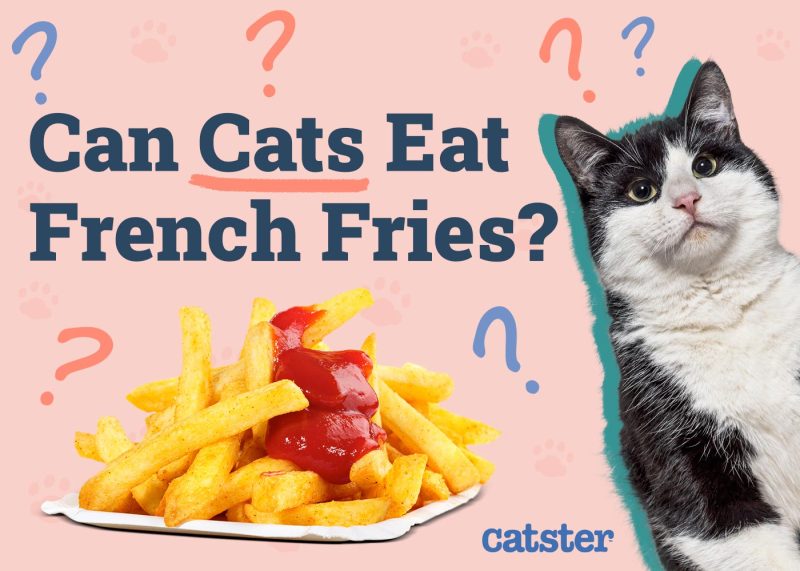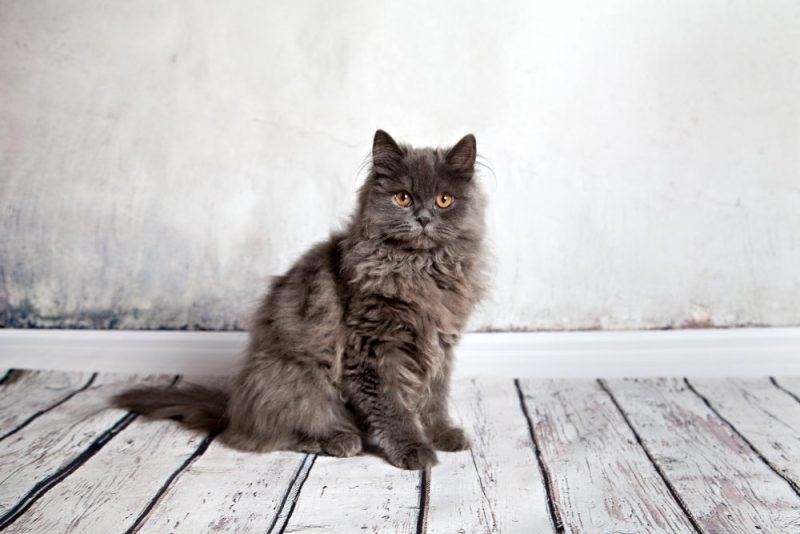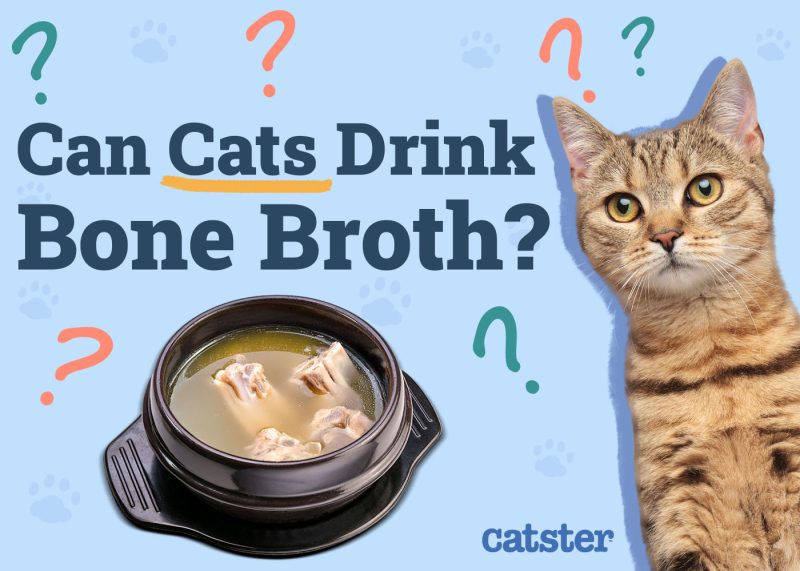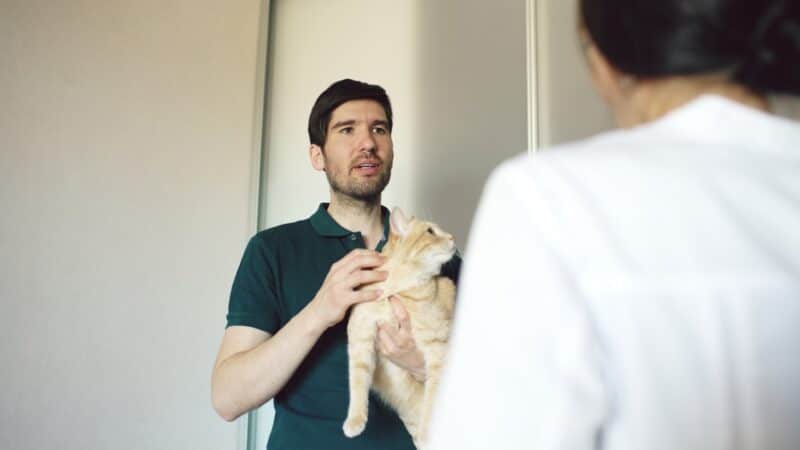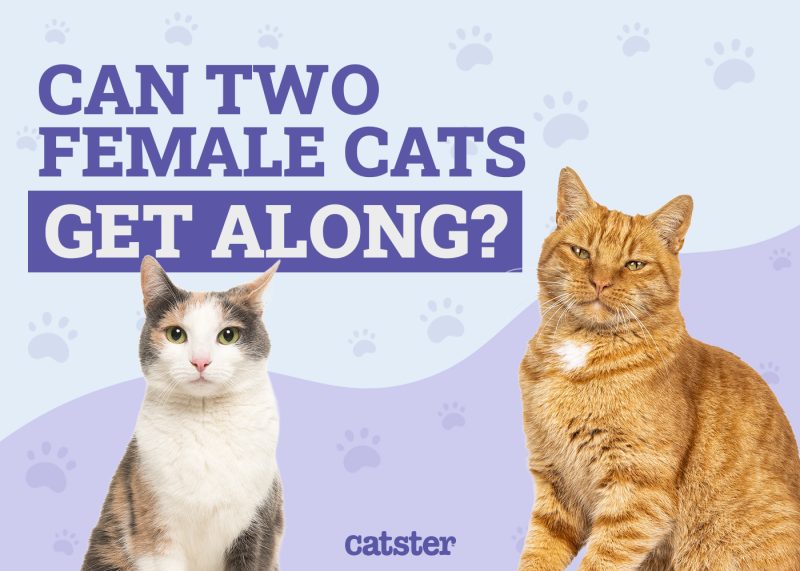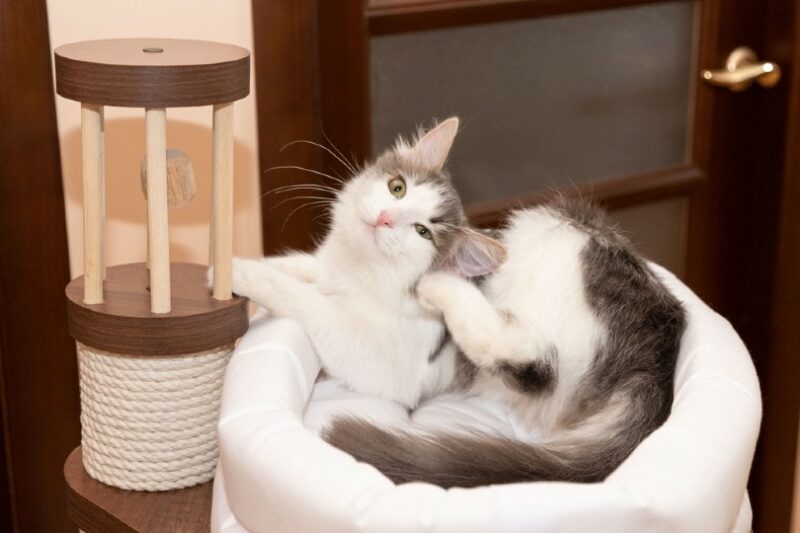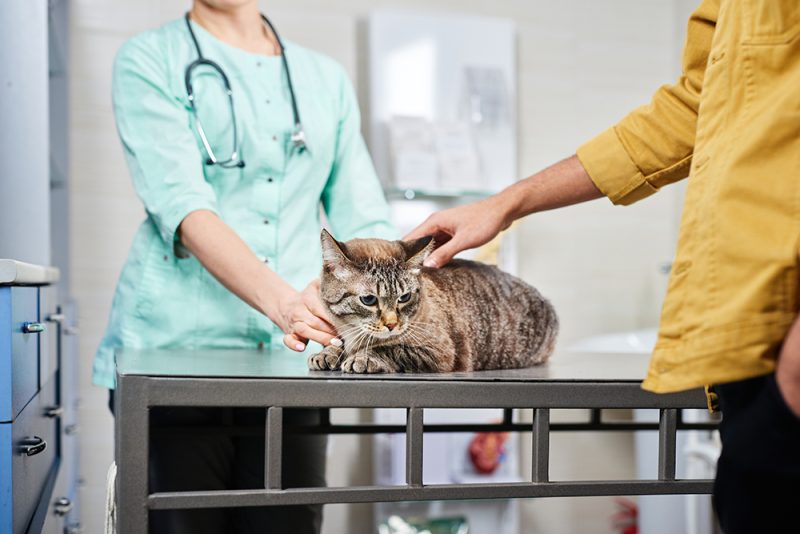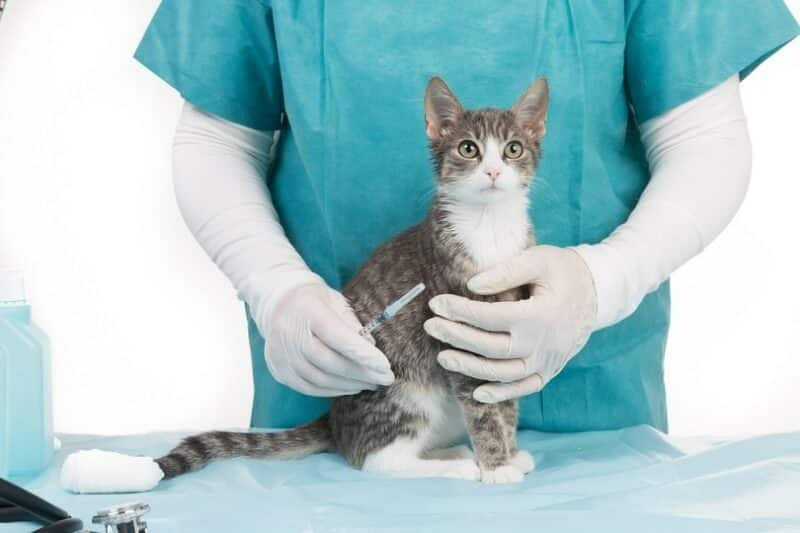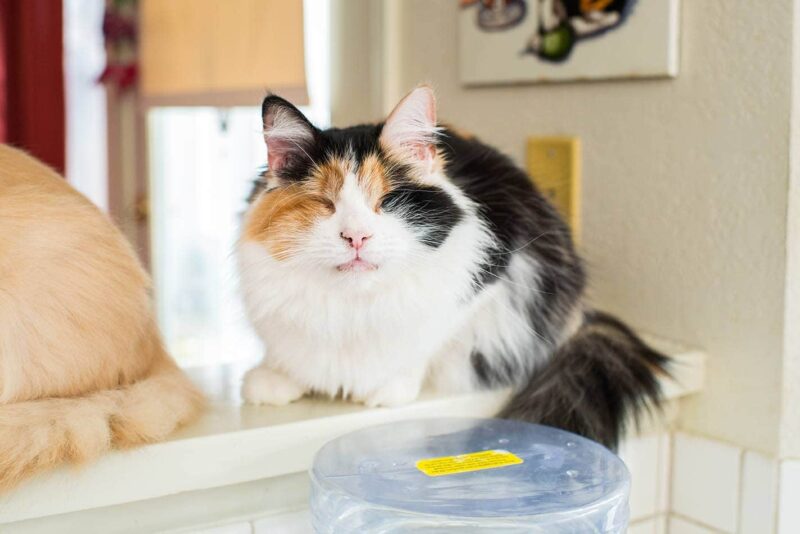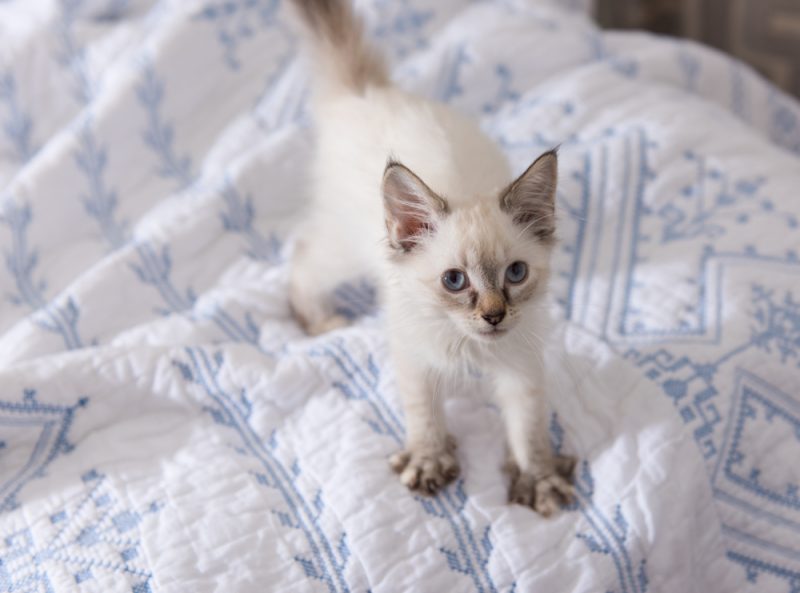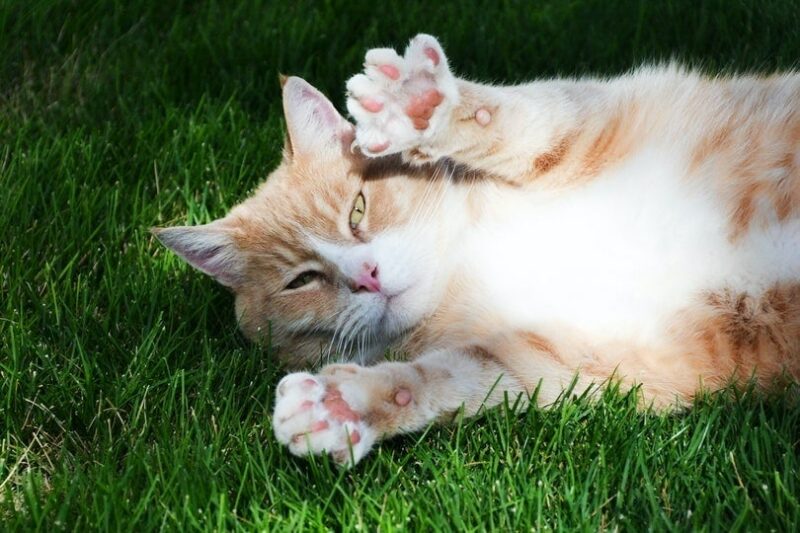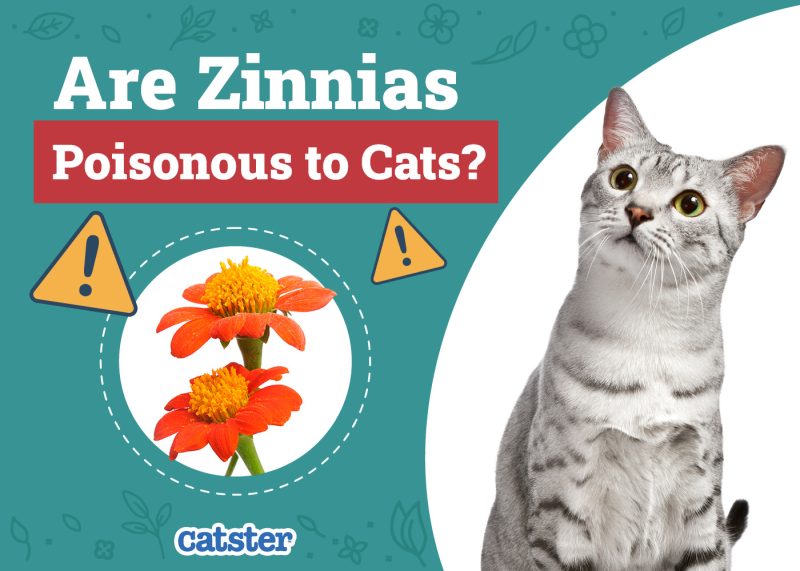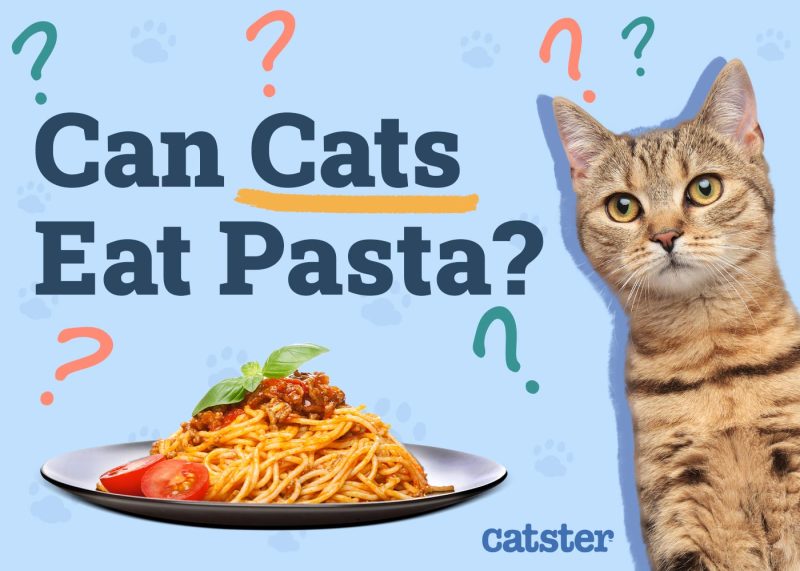Cats are usually fastidious groomers that don’t allow a single hair to fall out of place. However, there are times when cats can drool all over themselves, which is especially concerning when your cat is panting. If a cat is panting and drooling, it requires urgent veterinary attention.
It can be frightening when your cat is panting and drooling in this way, and the key is to get treatment for your cat quickly. We’ve collected all the reasons why your cat may be panting and drooling into one handy list, and we’ll discuss why your cat may be doing this and what you can do to help them.

The 6 Likely Reasons Why Your Cat Might Be Panting and Drooling
1. Stress
When cats are stressed, such as making a trip to the vet or a car journey in a carrier, they can pant. This panting often leads to drooling, which, combined with the nausea that car journeys can cause, can make your cat even more agitated. If a cat is panting and drooling due to stress, they need to be calmed as soon as possible.
For example, if they’re traveling to a vet appointment, calling ahead to let them know your cat’s condition and traveling straight to the vet’s office without any delays can help calm them down while under supervision. You can also ask your vet to prescribe calming medication to your cat for use before you make the trip to the clinic.
If a cat is panting and drooling excessively, has collapsed, shows any signs of breathing issues, or has blue gums, it is a veterinary emergency, and they must be taken to the vet as soon as possible.
If you need to speak with a vet but can't get to one, head over to PangoVet. It's an online service where you can talk to a vet online and get the advice you need for your pet — all at an affordable price!

2. Cooling Down When Overheating
It’s rare to see a cat panting and drooling due to being too hot, but it does occur. If your cat is too hot, they can pant to release heat as they don’t have sweat glands as people do on their skin. Instead, they have tiny sweat glands in the pads of their paws and between their toes. While they help cool the cat down, they aren’t as effective as human sweat glands.
Cats pant to cool themselves down by evaporating the saliva on their tongue. A cat that is panting and drooling because they’re hot is dangerous, so your vet should be contacted if you suspect your cat is overheating. Overheating is more commonly seen in flat-faced or brachycephalic breeds such as Persians.
The optimum ambient temperature range for cats is between 25–30 oC (77 – 86oF). Cats can tolerate temperatures up to 38oC (100oF), however, it isn’t encouraged to push them to this limit.
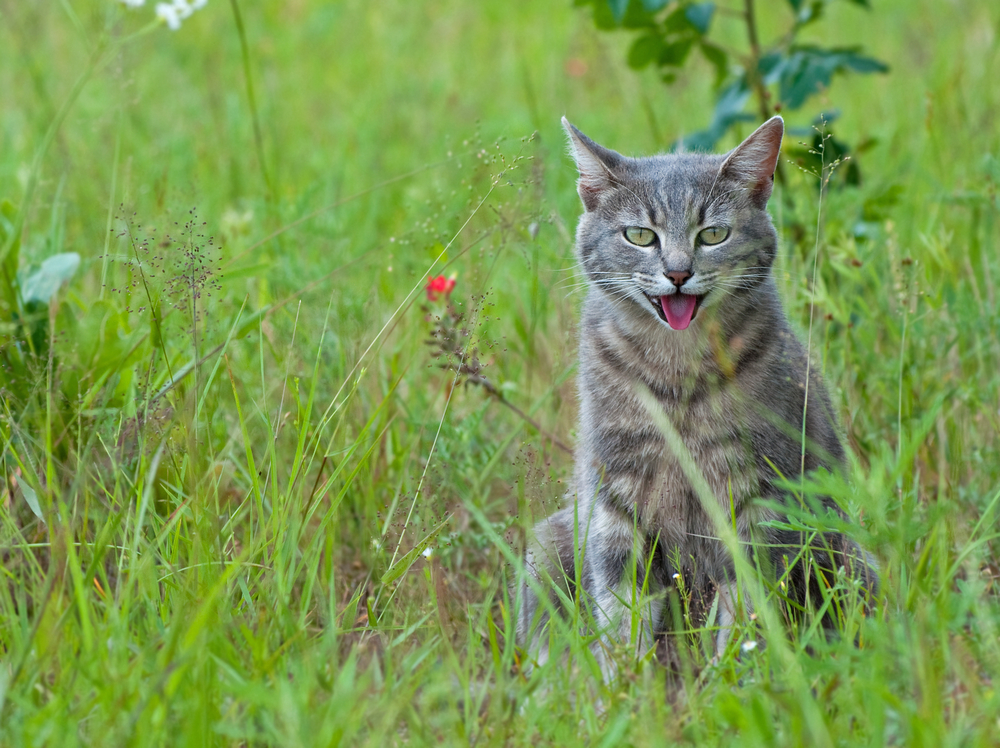
3. Heart issues
Cats can suffer from a range of heart problems that can all cause panting and drooling. Panting in cats with heart problems is usually caused by a fluid build-up in the chest, which can also cause coughing. In addition, conditions like hypertrophic cardiomyopathy, are commonly found in Maine Coon cats.
Drooling is often secondary to this, as cats unwell enough to pant will likely be very stressed, causing them to salivate. If your cat has a known heart condition and is panting, it may mean they’re struggling to breathe.
4. Dental Problems
Cats that are drooling excessively may be suffering from dental problems. Issues such as tooth decay, dental pain, and stomatitis (inflammation of the tongue) can all cause drooling and hypersalivation. This is often accompanied by other symptoms such as:
- Problems with eating
- Bad breath (halitosis)
- Brown or black teeth
A vet visit can help diagnose dental problems, and often a combination of treatments and lifestyle changes are prescribed to correct the issue. Dental surgeries are done under anesthesia, and follow-up treatments such as tooth brushing or diet changes can prevent further tooth problems in the future.
Dental problems can also be caused by underlying issues in other organs, such as the kidneys. At other times, a growth in the mouth, either in the form of a tumor or a mucocele (a salivary gland disorder) may result in drooling as well.
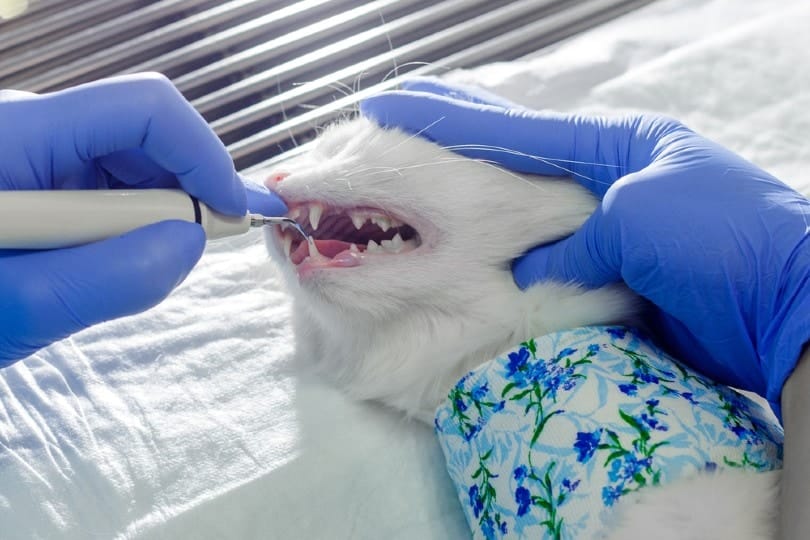
5. Respiratory Distress
Cats in respiratory distress will often pant as they try to breathe. Infections can cause respiratory distress, fluid accumulation in the lungs caused by heart problems, or other diseases of the airways and lungs, such as feline asthma. Drooling can also occur with acute respiratory distress, particularly in cats with blocked upper airways caused by viruses or infections such as the calicivirus or cat flu.
- A hunched posture with head and neck extended
- Blue tongue or gums (known as cyanosis)
- Abdominal breathing
- Wheezing
- Coughing
These signs are severe and even life-threatening, particularly if your cat has a blue tinge to its tongue or gums. This indicates that they are not getting oxygen and must be rushed to the vet for treatment immediately.
6. Overexertion
Cats don’t often run around and overexert themselves to the point of panting and drooling, but it can happen. It’s much more common in kittens who want to play, and in this case, it’s wise to calm the kitten down and observe them until they stop panting. Panting due to overexertion in older cats is often seen in brachycephalic breeds, such as Persians. Cats that suffer from heart conditions can also be intolerant to exercise and can pant and even collapse if they overexert themselves.
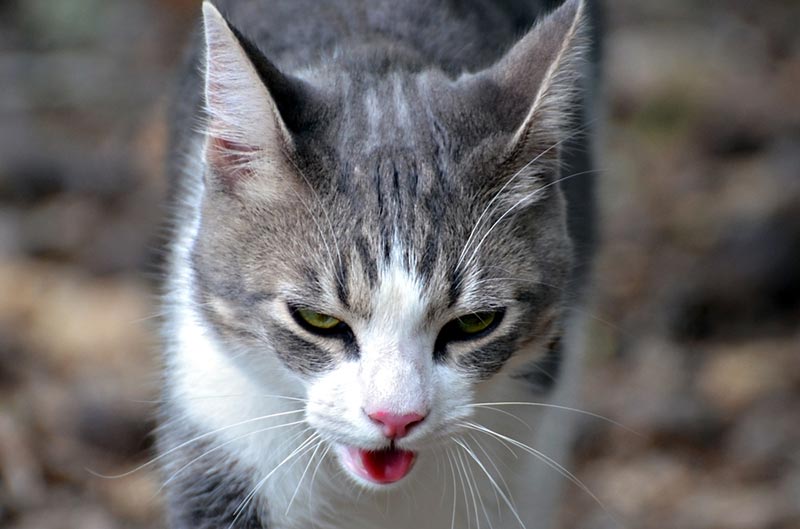

When Should I Worry About My Cat’s Panting and Drooling?
While some degree of panting is “normal” in cats, such as if they’re stressed or hot, excessive panting is always serious. If your cat has any diagnosed conditions, such as heart disease, kidney disease, or serious injuries (such as healing broken limbs), they should be taken to the vet immediately if they begin panting. Panting in cats is particularly serious if it’s accompanied by any of the following symptoms, as it usually means a cat is not getting enough oxygen or is struggling to breathe. Panting in cats is also serious if it doesn’t quickly resolve once the cat stops exercising or is placed in a cool room (if they’re feeling too hot).
- Blue-tinged gums or tongue
- Abdomen abnormally sucking in with each breath
- Hunched posture with head and neck extended
- Collapse
- Unconsciousness

Conclusion
Cats don’t pant and drool often, but when they do, it’s likely a sign that they’re very stressed. If your cat is highly stressed, calming them down by reassuring them and taking them out of the stressful situation is the first thing to do. Veterinary attention should be sought for any other reason, particularly if your cat is panting, drooling heavily, or has other concerning symptoms.
See Also:
- What Does It Mean When a Cat Is Panting? 7 Vet-Reviewed Reasons
- Why Is My Cat Panting in the Car? (5 Possible Reasons)
Featured Image Credit: Ling_Chen, Shutterstock
